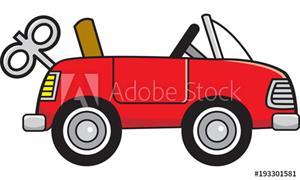
PUMPA - SMART LEARNING
எங்கள் ஆசிரியர்களுடன் 1-ஆன்-1 ஆலோசனை நேரத்தைப் பெறுங்கள். டாப்பர் ஆவதற்கு நாங்கள் பயிற்சி அளிப்போம்
Book Free DemoLife is impossible without energy. The energy demand is ever increasing.
Where do we get energy from?
The Sun is the most significant natural source of energy for us. Many of our sources of energy are derived from the Sun. We can also take energy from the nuclei of atoms, the inside of the earth, and the tides.

Source of energy - The Sun
The word energy is very commonly used in our daily lives, but we give it a definite and precise meaning in science.
Consider the following examples:
- When a fast-moving cricket ball hits stationary stumps, the stumps are thrown away.

- Similarly, an object, when elevated to a particular height, gets the capability to do work. You must have noticed that when the raised hammer falls on a nail placed on a piece of wood, it pushes the nail into the wood.

- We have also seen children winding a toy (such as a toy car), and when the toy is located on the floor, it starts moving.

- When a balloon is packed with air and we see a change in its shape, when we touches it,. As long as we press it lightly, it can shift its initial form when the force is removed. But, if we press the balloon hard, it can even explode, creating a blasting sound.

In all these examples, the objects acquire, through different means, the capability of doing work. An object having the ability to do work is said to possess energy. The object which does the work loses energy, and the object on which the work is done gains energy.
How does an object with energy do work?
An object which possesses energy can exert a force on another object. When this happens, energy is transported from the former to the latter. The second object may move as it receives energy and therefore does some work. Thus, the first object had the capacity to do work. This implies that any object that possesses energy can do work. The energy contained by an object is thus measured in terms of its capacity for doing work.
Therefore, the unit of energy is the same as that of work: joule (J). 1 J is the energy required to do 1 joule of work. Sometimes a larger unit of energy called kilojoule (kJ) is used. 1 kJ equals 1000 J.